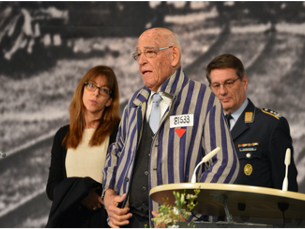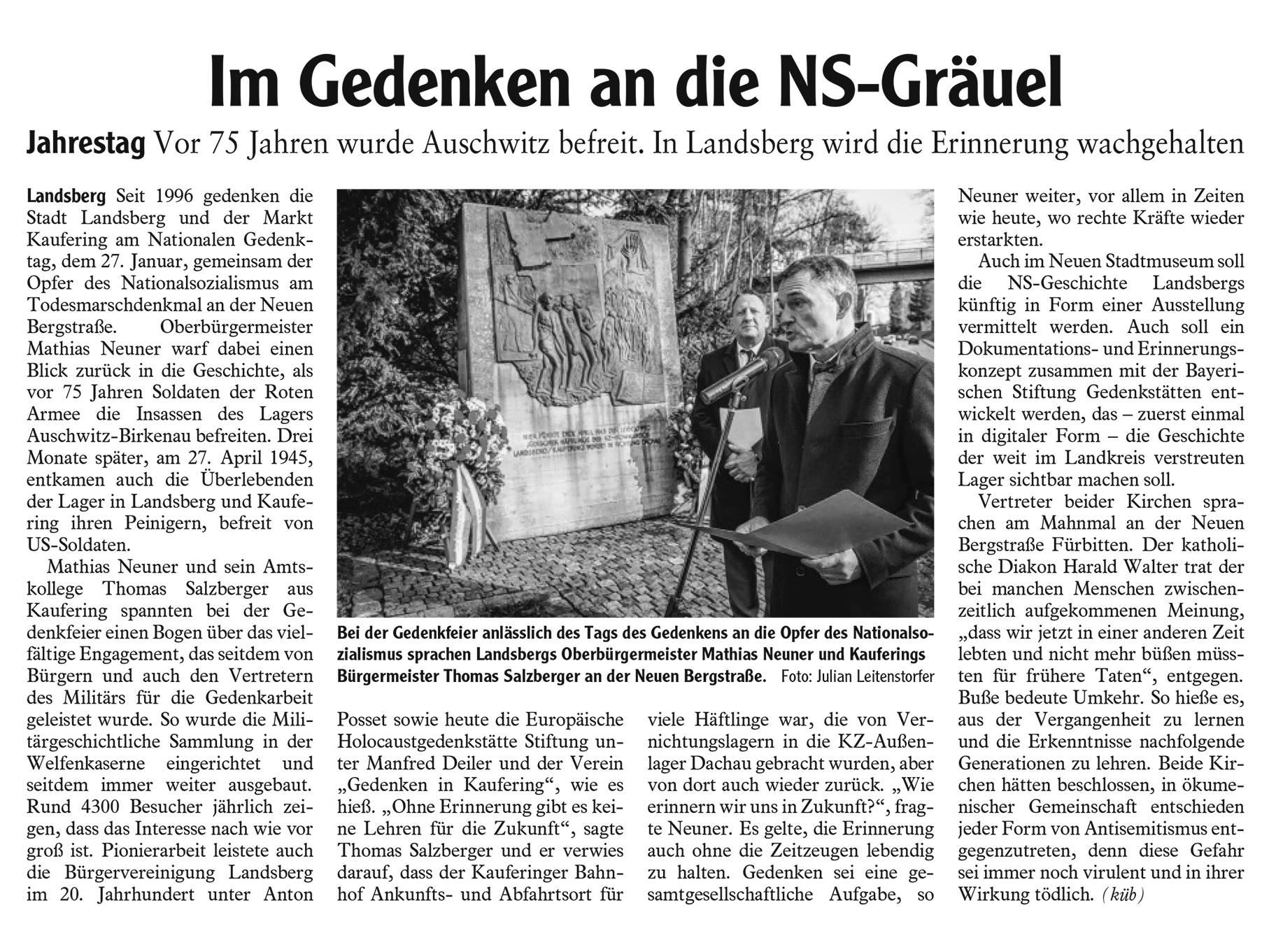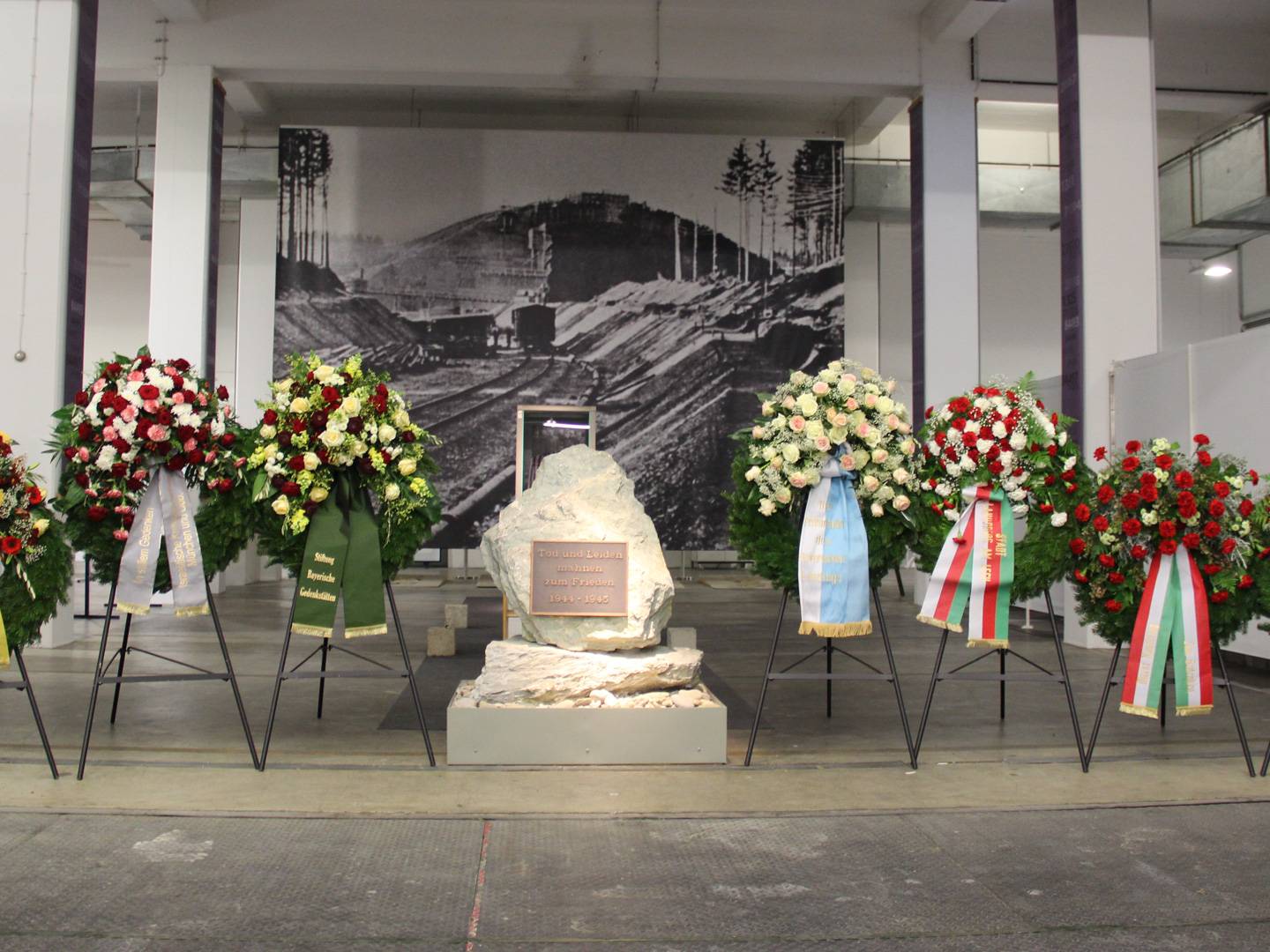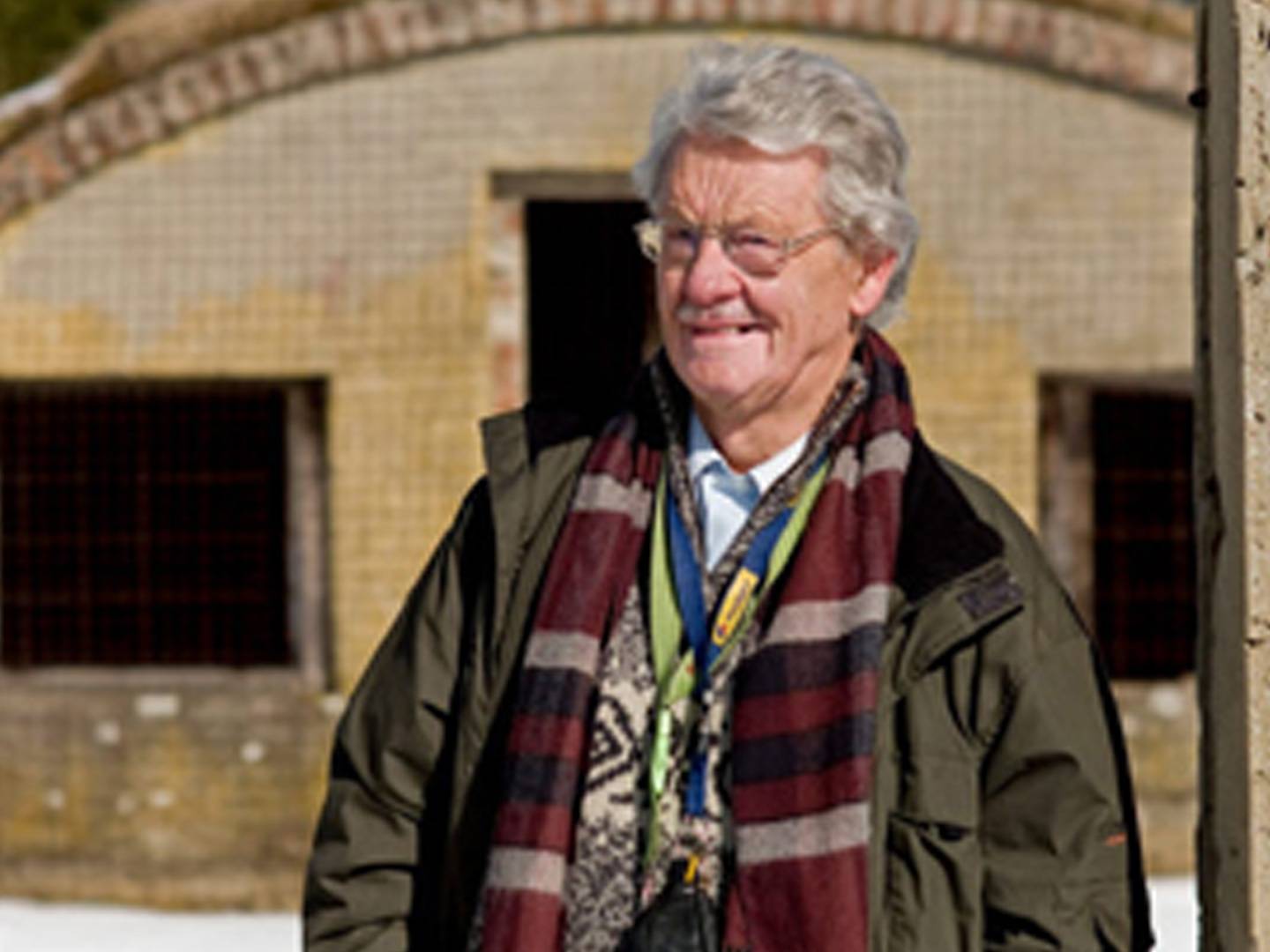Work of Remembrance
Shortly after the liberation of the concentration camps and their subcamps by the Allies in 1945, survivors erected memorial signs at the mass graves of concentration camp victims in the Landsberg/Kaufering region. At their insistence, the city and municipality of Landsberg had the first cemeteries built. These cemeteries were redesigned by the Bavarian State Compensation Office and inaugurated as memorial sites in the early 1950’s.
In the 1980’s citizens began increasingly to address the historic past of the Nazi era and the Landsberg/Kaufering concentration subcamp complex. In public, the work of remembrance proved to be difficult, since parts of society shied away from a critically examination of those years.
On the Federal President’s initiative, in the early 1980’s schools were called upon to do research into the Nazi era both before and during the war as part of a student competition called “German History.” In Landsberg, this led to the first reappraisal of connections between forced labour by concentration camp prisoners and the “Weingut II” armaments project. The student work that was supervised by the historian and grammar teacher, Anton Posset, won the competition in 1982/83. In 1992 Edith Raim, who took part in the competition, published her dissertation on the Landsberg/Kaufering and Mühldorf concentration subcamp complexes and thus created the first academic principles.
The “Landsberg im 20. Jahrhundert” (Landsberg in the 20th Century) association was founded as early as November 1983, which also dedicated itself to researching Landsberg’s contemporary history and had been publishing the “Themenhefte Landsberger Zeitgeschichte” since 1993. The association acquired part of the premises of the former Kaufering VII camp where the preserved clay pipe buildings can be found, and saved them from demolition. Today the premises are owned by the „Europäische Holocaustgedenkstätte Stiftung e.V.“ association, which in 2016 was awarded the “Bayerischen Denkmalpflegepreis” (Bavarian Monument Preservation Prize) for conserving the clay pipe buildings.
Upon the initiative of Anton Posset and the “Landsberg im 20. Jahrhundert” association, November 1984 witnessed the erection of the first memorial stone in the Landsberg/Kaufering region located outside the concentration camp cemeteries on the former premises of the Kaufering III concentration subcamp. The inauguration took place on 11 November together with the Kaufering municipality, Mayor Jung and the former concentration camp prisoner, Viktor Frankl.
During the 1980’s, Captain Helmut Weißbach and Sergeant Major, Rudolf Schmidt, also began to research the history of the “Weingut II” bunker (today Welfen Barracks), which has been used by the German Air Force since 1963. A plaque was erected in 1984 as the first memorial sign at the bunker to commemorate the victims. This was followed by an exhibition by members of the German Air Force and the “Landsberg im 20. Jahrhundert” association in the town of Landsberg.
In 1993, the market town of Kaufering had an information stele erected at the preserved foundations of the Kaufering III camp kitchen barracks. The former camp premises of Kaufering XI were made visible as part of a school project at the Ignaz-Kögler Grammar School Landsberg under the direction of the teacher Barbara Fenner in 1994/95. The resulting student exhibition can now be found in the military history collection “Erinnerungsort Weingut II”, established in 2011, at Welfen Barracks.
At Kaufering railway station, one of several death march monuments created by Hubertus von Pilgrim was erected in 2009 as well as a memorial site with a freight wagon, with the aim of symbolically bearing witness to the arrival and departure of concentration camp prisoners.





